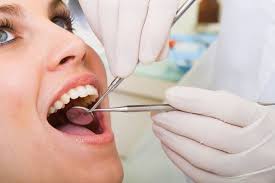During a dental checkup, your general dentist only aims to keep your mouth healthy. They inspect teeth, gums, and potential signs of trouble. Cavities and plaque often hide in plain sight, and early detection is key. Your dentist also assesses gum health and looks for signs of gum disease. They may examine your bite and jaw alignment too. These checks help spot issues like misalignment that can lead to discomfort. Regular visits prevent problems from becoming severe. For residents considering a Dedham tooth implant, understanding your dental health is crucial. Your dentist will discuss your needs and plan future care. X-rays might be used to see what’s happening beneath the surface. These images offer a clear view of bone health and detect hidden problems. Your dentist’s keen eye ensures you leave the chair with knowledge and confidence. Your smile’s well-being is their priority.
Checking for Cavities
Cavities are sneaky. They often start small and grow quietly. Your dentist uses a small mirror and a probe to find them. Sometimes, they use special lights or lasers. Early treatment stops them from getting worse. Tooth decay, if untreated, can cause pain and infection. Effective care can save you from future problems.
Evaluating Gum Health
Healthy gums are firm and pink. Your dentist looks for swelling, redness, or bleeding. These can be signs of gum disease. In advanced cases, gums can pull away from the teeth. This leaves spaces that collect bacteria. Routine checkups help catch gum disease early. Prevention is easier than treatment.
Examining Your Bite and Jaw
Jaw pain or headaches might be due to alignment issues. Your dentist checks how your teeth fit together. They look for signs of grinding or clenching. These habits wear down teeth over time. Proper alignment protects your teeth and jaw. Adjustments can improve your comfort and health.
Using X-rays Effectively
X-rays provide a deeper view of your mouth. They reveal cavities between teeth and check bone health. X-rays are safe and quick. Your dentist balances the need for X-rays with safety. Regular imaging helps monitor your dental health. This is important for planning treatments like implants or braces.
Common Findings During Checkups
| Finding | Impact | Action |
| Cavities | Tooth Decay | Filling |
| Gum Disease | Gum Inflammation | Deep Cleaning |
| Misalignment | Jaw Pain | Orthodontics |
| Bone Loss | Tooth Instability | Bone Graft |
The Importance of Oral Hygiene
Good oral hygiene supports a healthy mouth. Brushing twice daily and flossing removes plaque. Mouthwash can freshen breath and kill bacteria. Your dentist may recommend specific products. Consistent care at home complements professional checkups. Visit the CDC’s oral health page for more information on maintaining oral health.
When to Visit Your Dentist
Visit your dentist every six months. Some might need more frequent visits. If you experience pain or discomfort, don’t wait. Early treatment saves time and prevents further issues. Your dentist is your partner in health. They provide care, guidance, and reassurance.
Understanding Dental Costs
Dental care is an investment in your health. Insurance often covers routine checkups. Discuss options with your dentist if you worry about costs. Many offices offer payment plans. Prioritize dental visits as they prevent more significant expenses later.
Conclusion
Your dentist’s checkup is a crucial part of maintaining health. They focus on preventing and addressing issues. Regular visits catch problems early. Keep up good hygiene habits at home. Take any discomfort seriously. Together, you and your dentist ensure a healthy, confident smile.







